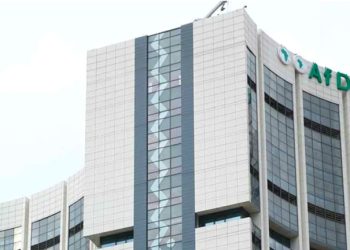
Namibia and Zambia have sealed a deal to construct an oil and gas pipeline from Walvis Bay to Lusaka.Â
The two countries on Thursday finally signed a Memorandum of Understanding (MoU) towards the realisation of an ambitious private sector-led plan which has been in the making for the past few years.Â
Previous attempts to sign the MoU in April during the Energy Conference held in Windhoek, were scuppered by the requirement for a Namibian Cabinet approval before the Ministry of Mines and Energy signs the agreement.Â
However, on Thursday Mines and Energy minister Tom Alweendo signed on behalf of Namibia with Zambia’s Minister of Energy Peter Kapala signing on behalf of Zambia to map the way for the construction of the Namibia-Zambian Oil Products and Natural Gas Pipeline Project (NAZOP).Â
“If executed as planned, this project has the potential to unblock economic potential, not only for Namibia and Zambia, but for the SADC region as a whole. This project will be a great example of the regional cooperation as envisaged by the SADC Regional Indicative Strategic Development Plan,†Alweendo said after signing of the agreement.Â
“Although this is a private sector-led project, our two Governments do accept that our economies will grow and industrialise better and quicker when we have a strong private sector involvement. We also understand that our economies will flourish when there is collaboration between the Government and private sector. Hence our two Governments’ commitment to assist with this project.â€Â
He said implementation of the project would be key towards the realisation of the project. Although details remain sketchy, efforts are now underway to create a technical committee comprising representatives from both countries and the private sector drivers of the project.Â
“It is one thing to sign an MoU and it is another thing to ensure that it is implemented. The MoU makes provision for a joint technical committee that will be responsible to work with the private sector in identifying the exact assistance that will be needed. We urge those who will be serving on the technical committee to work diligently and to make it happen,†Alweendo said.Â
“We also hope that the private sector actors, both from Zambia and Namibia, will use their best endeavours to progress this project; and to know that you can count on our two Governments’ partnership. We look forward to a great partnership where the winners are our two peoples.â€Â
Petroleum Economist in the Ministry of Mines and Energy, Abednego Ekandjo told The Brief that details such as project drivers, costing and timelines will only become available once the joint technical committee meets.Â
“The technical committees are the ones who will push through with the implementation of the project. In terms of costs, those will come at a later stage once the technical committee has engaged the parties to put together a feasibility study, because the project costing will come out of the feasibility study,†he said.Â
“Once the joint technical committee has been set up only then will that committee be able to come up with the implementation timelines. This is a private sector initiative and it is the private sector that is pushing things like funding, once the technical committee is set up, those issues will be sorted out, and for example, the land questions and we will charge a fee for the pipeline that will run through your country. At this stage there is no timeline when the technical committee is set to meet. It’s for the senior government officials to meet and agree upon a date.â€Â
The pipeline plans come as Zambia and Angola last year signed a N$89 billion (US$5 billion) deal to build an oil pipeline between the two countries.Â
The pipeline is aimed at supplying finished petroleum products from oil-rich Angola to Zambia.Â
The Angolan petroleum pipeline will also be developed by the private sector with state-owned petroleum Angolan firm SANANGOL and the Zambia state company Industrial Development Corporation (IDC) Zambia Ltd as strategic equity partners.Â
Once completed, the Zambia-Angola multi-product petroleum pipeline will transport petrol, diesel, kerosene, and gas.











